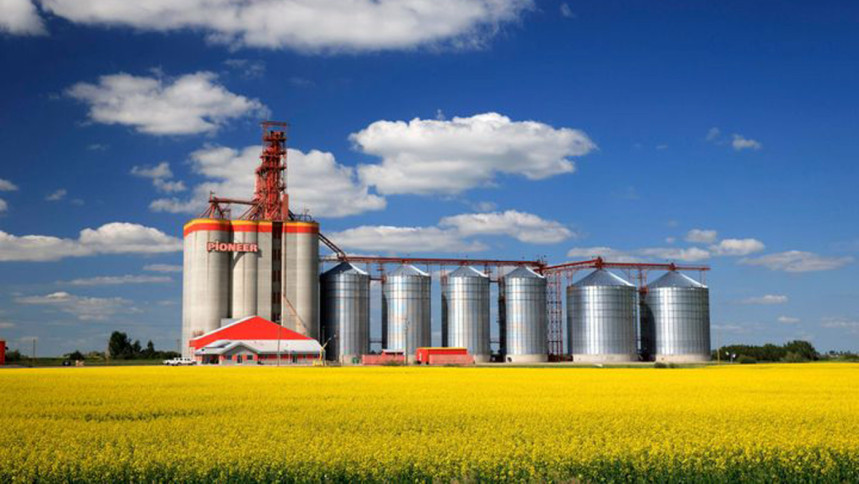Diversification Of Canola Imports: China's Post-Canada Approach

Table of Contents
The Canada-China Canola Trade Dispute and its Impact
The Canada-China canola trade dispute significantly altered the global canola market. Accusations of pests and other quality issues levied against Canadian canola shipments led to a series of retaliatory measures, culminating in restrictions and eventual near-total blockage of Canadian canola exports to China. This was a major blow to Canadian farmers and processors, but it also forced China to reassess its import strategy.
-
Timeline of key events:
- 2018: Initial concerns raised by China regarding Canadian canola shipments.
- 2019: Formal investigations launched, leading to import restrictions.
- 2020-2023: Continued trade tensions and limited Canadian canola access to the Chinese market. Negotiations and attempts at resolution remain ongoing.
-
Canadian canola export volumes to China: Before the dispute, Canada supplied a significant portion of China's canola needs. Post-dispute, these volumes plummeted, forcing China to seek alternative sources.
-
Economic impact: The dispute caused significant economic hardship for Canadian farmers and the Canadian economy. For China, the disruption to its canola supply chain led to increased costs and potential shortages of vegetable oil.
-
The role of international trade organizations: The World Trade Organization (WTO) became involved, with ongoing discussions aimed at resolving the trade friction.
China's New Canola Import Sources
In the wake of the trade dispute, China actively diversified its canola import sources, reducing its dependence on any single supplier.
-
Top alternative suppliers: Australia, Ukraine, Russia, France, and Brazil emerged as key alternative sources of canola for China. These countries filled the void left by Canada, albeit with varying levels of success.
-
Volumes imported: While exact figures vary year to year, imports from Australia, particularly, significantly increased, demonstrating the successful transition to new suppliers.
-
Comparison of quality and price: The quality and price of canola varied across these new suppliers, influencing China's purchasing decisions based on factors such as transportation costs, quality standards, and overall cost-effectiveness in producing vegetable oil.
-
Geopolitical considerations: China's sourcing decisions are frequently influenced by geopolitical factors, including existing diplomatic relations and potential for future trade agreements within this agricultural sector.
The Role of Domestic Canola Production in China
China also prioritized increasing its domestic canola production to enhance food security and reduce its reliance on imports.
-
Growth in Chinese canola acreage and yield: Government initiatives, including subsidies and technological advancements, have contributed to a notable increase in canola acreage and yield within China.
-
Government policies: China implemented policies to support domestic canola cultivation, including financial incentives, improved infrastructure, and research funding, which aims to improve efficiency in oilseed production.
-
Challenges facing domestic canola production: Challenges such as limited arable land, pest infestations, and variable weather patterns continue to hinder China's progress towards self-sufficiency in canola production.
-
Contribution of domestic production: While domestic production has increased, it still falls short of meeting China's total demand for canola and vegetable oil.
Implications for Global Canola Trade
China's shift in canola import sources created ripples throughout the global market.
-
Price fluctuations: The increased demand from alternative suppliers led to price fluctuations in the global canola market, benefiting some exporting countries while impacting others.
-
Changes in market share: The dispute resulted in a significant redistribution of market share among canola-exporting countries, with Australia experiencing a marked rise in exports, while Canada’s market share declined substantially.
-
Impact on Canadian agricultural policy: Canada has since adapted its agricultural policies to address the reduced access to the Chinese market, diversifying its own export markets and focusing on value-added canola products.
-
Potential for future trade agreements: The events highlighted the importance of strong, diverse trade relationships for both canola exporters and importers, prompting a reassessment of trade agreements and collaborative efforts.
Future Outlook: China's Long-Term Canola Import Strategy
Predicting China's long-term canola import strategy requires consideration of multiple factors.
-
Further diversification: China will likely continue diversifying its import sources to mitigate risks associated with relying on any single supplier.
-
Renewed trade relations with Canada: The possibility of renewed trade relations with Canada remains uncertain, depending on the resolution of the existing trade disputes.
-
Technological advancements: Technological innovations in canola production and processing will influence China’s future sourcing decisions, potentially impacting efficiency and sustainability.
-
Sustainability concerns: Environmental concerns and sustainability standards will likely play an increasingly important role in shaping China's future canola import preferences.
Conclusion
China's post-Canada canola import strategy reveals a multifaceted approach involving diversification of import sources, expansion of domestic production, and navigating complex geopolitical considerations. This strategy has significant implications for global canola trade, impacting market prices, the relative position of various exporting countries, and influencing agricultural policy adjustments around the world. Understanding China's evolving canola import strategy is crucial for all stakeholders. Further research and analysis into the dynamics of China's canola imports are needed to anticipate future trends and adapt to the changing global agricultural landscape. Stay informed about the latest developments in China's post-Canada approach to canola imports to navigate this dynamic market effectively.

Featured Posts
-
 The Real Safe Bet Low Risk Investment Options Explained
May 10, 2025
The Real Safe Bet Low Risk Investment Options Explained
May 10, 2025 -
 Victoire Du Psg En Arkema Premiere Ligue Dijon Battu
May 10, 2025
Victoire Du Psg En Arkema Premiere Ligue Dijon Battu
May 10, 2025 -
 Unprovoked Racist Attack Shatters Family
May 10, 2025
Unprovoked Racist Attack Shatters Family
May 10, 2025 -
 Psgs Ligue 1 Victory Analyzing Luis Enriques Managerial Influence
May 10, 2025
Psgs Ligue 1 Victory Analyzing Luis Enriques Managerial Influence
May 10, 2025 -
 Dangotes Influence On Nigerias Petrol Market And Nnpc Pricing
May 10, 2025
Dangotes Influence On Nigerias Petrol Market And Nnpc Pricing
May 10, 2025
